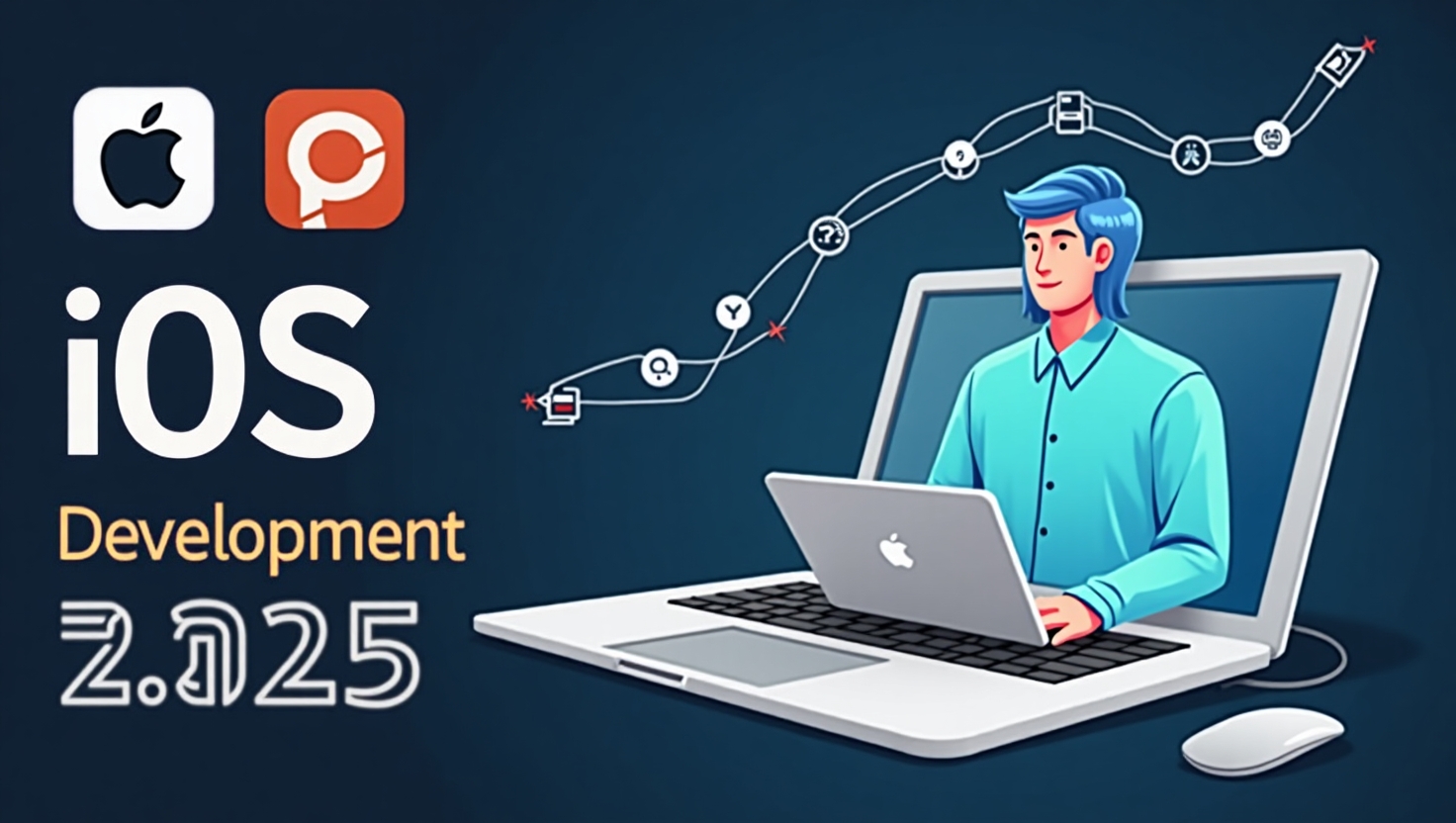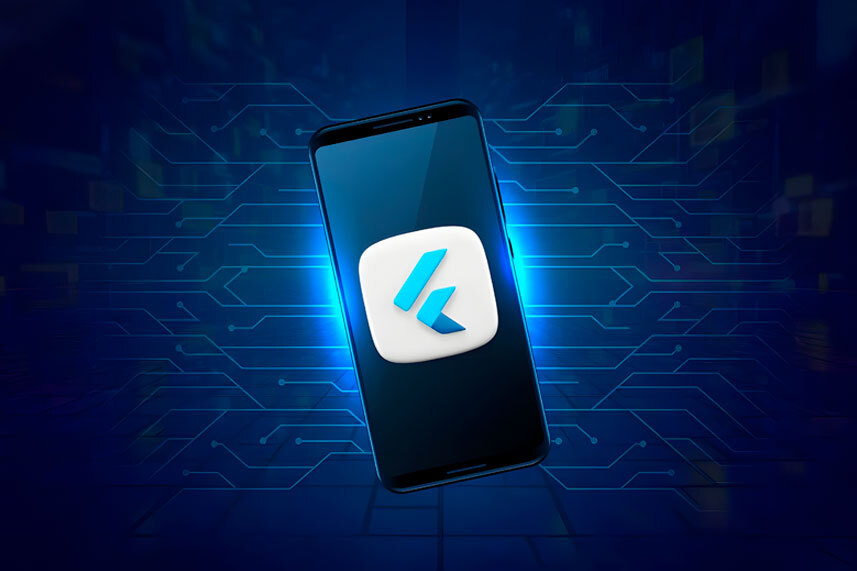iOS Development in 2025: A Complete Developer’s Guide
What’s iOS Development Really About?
Look, I’m gonna be straight with you – iOS development has been one wild journey. Started building iPhone apps way back in 2009, when the App Store was basically the wild west and any half-decent app could rake in some serious cash. Those golden days? Yeah, they’re history. But iOS development itself? Man, it’s gotten so much more sophisticated, powerful, and if I’m being honest, way more rewarding than it ever was.
Here’s what nobody bothers telling you when you’re just starting out: iOS development isn’t just about cramming Swift syntax into your brain or figuring out how to make Xcode stop crashing on you. It’s about getting inside Apple’s head – understanding their whole ecosystem, the way they think about design, and most importantly, what their users actually want. iPhone users? They’re picky as hell. They want apps that feel like they belong on their device, polished to perfection, and intuitive enough that their grandma could use it. Try to half-ass an iOS app, and trust me, users will call you out faster than you can say “one star review.”
I still remember my very first iOS app – this simple weather thing that should’ve taken me maybe a week to build. Instead, I spent three entire months wrestling with it because I kept trying to force iOS to work like Android or web development. The second I stopped being stubborn and started working WITH the platform instead of against it, everything just… clicked. See, Apple’s got some pretty strong opinions about how things should work, and fighting those opinions? That’s a battle you’re gonna lose every single time.
The ecosystem’s absolutely massive now too. We’re not just talking iPhones anymore – there’s iPad, Apple Watch, Apple TV, Mac, and probably some crazy AR headset coming that’ll flip everything upside down again. One codebase MIGHT run across all these devices, but each one’s got its own personality and what users expect from it.
A Quick Look Back at iOS History
iOS development kicked off with Objective-C and the original iPhone SDK back in 2008. If you’ve never had to wrestle with Objective-C, consider yourself lucky. That language was powerful, sure, but it felt like trying to code while wearing boxing gloves. All those square brackets everywhere and method names longer than a grocery list – it was like learning to program in ancient hieroglyphics.
Then 2014 rolled around, and Apple just dropped Swift on all of us. I’ll admit, I was pretty skeptical at first. Apple’s got this habit of introducing shiny new tech that sometimes just… disappears. But Swift? That was different. That was a complete game-changer. Suddenly, writing iOS code felt modern, safe, and actually FUN for the first time in years.
What really blew my mind was watching iOS transform from this basic mobile OS into this massive, comprehensive platform. iOS 7 brought in flat design and completely flipped how we thought about mobile interfaces. iOS 8 gave us extensions and widgets. iOS 9 introduced iPad multitasking. Every single release fundamentally changed what was even possible to build.
I’ve been through every major iOS release since day one, and I can tell you right now – this platform has never been more capable than it is today. The frameworks are rock-solid, the tools actually work (most of the time), and the opportunities? They’re endless. But here’s the catch – the competition’s also fiercer than it’s ever been.
What Makes iOS Development Actually Worth It
Performance That Actually Works
One thing that’s always impressed me about iOS development is how Apple handles performance. The whole platform is built from the ground up to be fast and responsive. Unlike Android where you’re dealing with literally hundreds of different devices with wildly different specs, iOS gives you this controlled environment where performance is actually predictable.
Last year I built this real-time audio processing app that had to handle multiple audio streams at the same time. On Android? That would’ve been a complete nightmare of compatibility issues and performance headaches. On iOS? The Core Audio framework just handled everything beautifully. The thing ran smooth as butter on everything from an iPhone 12 all the way up to the latest iPhone 15 Pro.
The secret sauce here is that Apple controls the entire stack – the hardware, the OS, and all the development tools. This tight integration means you can push performance in ways that just aren’t possible on other platforms. Metal for graphics programming, Core ML for machine learning, all the specialized frameworks – they all work together like they were designed by the same team (because they were).
The Development Tools Don’t Completely Suck
Xcode gets a lot of hate, and yeah, it’s not perfect. But compared to Android Studio or trying to piece together some cross-platform development nightmare, Xcode is actually pretty solid. Interface Builder lets you design interfaces visually, the debugger’s comprehensive, and the profiling tools are genuinely excellent.
The simulator’s fast enough and accurate enough for most of what you’ll be doing. Testing your app on different device sizes and iOS versions is straightforward. The crash reporting and analytics built right into Xcode make debugging production issues way easier than it should be.
I’ve used tons of development environments over the years, and while Xcode definitely has its quirks, it’s designed specifically for iOS development. Everything integrates the way it should, and you’re not constantly fighting with configuration nightmares or compatibility problems.
Swift Is Actually a Decent Language
When Swift first launched, it was rough around the edges. The syntax kept changing between versions, and the compiler was painfully slow. But Apple’s invested heavily in making Swift a world-class programming language, and it really shows now.
Swift combines the safety of modern languages with the performance of compiled languages. Optionals force you to handle null values properly, which eliminates entire categories of bugs that used to plague us. The type system is powerful enough to catch problems at compile time, but not so complex that it gets in your way when you’re trying to actually build something.
I love how Swift handles memory management automatically while still giving you control when you need it. Coming from Objective-C where memory management was manual and error-prone, Swift feels like a breath of fresh air.
Real-World Applications (Where I’ve Actually Used This Stuff)
Healthcare Applications
Spent two years working on a patient monitoring system for a major hospital network. iOS was perfect for this because healthcare workers needed something reliable, secure, and fast. The app handled real-time vital signs monitoring, medication tracking, and secure messaging between medical staff.
The integration with Apple’s HealthKit made it ridiculously easy to connect with other medical devices and apps. We could pull in data from fitness trackers, blood pressure monitors, and other connected devices. The privacy and security features built into iOS were absolutely crucial for HIPAA compliance – something that would’ve been a nightmare on other platforms.
One of the biggest challenges was making the app work reliably in areas with terrible network connectivity (hospitals, right?). iOS’s background processing capabilities and robust offline storage made it possible to queue updates and sync when connectivity came back.
Financial Services
Banking apps are where iOS really gets a chance to shine. Users expect financial apps to be secure, fast, and absolutely bulletproof. I worked on a trading platform that needed to handle thousands of real-time price updates per second while maintaining perfect accuracy.
The security features in iOS are extensive. Touch ID and Face ID integration, secure keychain storage, and app sandboxing all contribute to creating genuinely secure financial applications. The app review process also helps ensure that malicious apps don’t make it to the App Store.
We used Core Data for local storage and CloudKit for syncing user data across devices. The performance was excellent even with massive datasets, and the sync conflicts were handled gracefully. Users could start a transaction on their iPhone and complete it on their iPad without missing a beat.
E-commerce and Retail
Online shopping apps need to be fast, beautiful, and handle complex product catalogs. I built an app for a major retailer that included AR product visualization, advanced search, and personalized recommendations.
The Core Image framework made it possible to process product photos in real-time. Users could see how furniture would look in their space using ARKit, and the performance was smooth even on older devices. The combination of Core ML and CreateML made it possible to build recommendation engines that ran entirely on-device.
Payment processing was handled through Apple Pay, which provided a seamless checkout experience. The conversion rates were significantly higher than traditional payment flows because users could complete purchases with just a touch or glance.
Entertainment and Media
I worked on a video streaming app that needed to handle high-quality video playback, offline downloading, and social features. AVFoundation provided everything needed for professional-quality video handling, and the performance was excellent.
The app supported AirPlay for streaming to Apple TV, CarPlay for in-car entertainment, and Picture-in-Picture for multitasking. These platform-specific features created a much better user experience than what was possible with cross-platform solutions.
Content protection was handled through FairPlay, and the integration was seamless. Users could download content for offline viewing, and the DRM ensured that content was properly protected without creating friction for legitimate users.
The Challenges (Because Nothing’s Ever Perfect)
The App Store Review Process
Let’s be completely honest here – App Store review can be absolutely frustrating. I’ve had apps rejected for the most ridiculous reasons, and sometimes it feels like reviewers are just hunting for reasons to say no. But here’s the thing: that review process also ensures the quality and security that users have come to expect from iOS apps.
I’ve learned to work WITH the review process rather than against it. Following the Human Interface Guidelines closely, being transparent about data usage, and thoroughly testing on different devices reduces the chances of rejection. When rejections do happen, the review team is usually pretty responsive to explanations and clarifications.
The review process has gotten way more predictable over the years. Apple has published much clearer guidelines, and the review times have improved dramatically. Most apps now get reviewed within 24-48 hours, which is so much better than the week-long waits we used to suffer through.
Hardware Dependency
iOS development absolutely requires a Mac. You can’t effectively develop iOS apps on Windows or Linux, which really limits who can get started with iOS development. This is super frustrating for developers who prefer other platforms or have budget constraints.
I’ve tried various workarounds over the years – virtual machines, cloud-based development environments, cross-platform tools. None of them provide the same experience as developing on actual Mac hardware. The performance is slower, debugging is more difficult, and you can’t test on physical devices properly.
The hardware requirements also extend to testing. While the simulator is decent, you really need multiple physical devices to test properly. iPhones, iPads, and Apple Watches all have different screen sizes, capabilities, and user interaction patterns.
Keeping Up with Platform Changes
Apple introduces new features and deprecates old ones with every iOS release. This is generally good for the platform, but it means constant learning and updating. I’ve had to completely rewrite portions of apps because Apple deprecated the frameworks I was using.
The transition from Objective-C to Swift was particularly brutal. I had millions of lines of Objective-C code that needed to be modernized. Apple provided decent migration tools, but it was still a massive undertaking that took several years to complete.
iOS 14 introduced significant privacy changes that required updating how apps request permissions and handle user data. iOS 15 brought new UI frameworks and deprecated older ones. Each release requires careful planning and testing to ensure apps continue working properly.
Development Costs
iOS development can get expensive fast. You need a Mac, an iOS developer account, and potentially multiple devices for testing. The annual developer program fee is reasonable, but the hardware costs can add up quickly, especially for small teams or individual developers.
The App Store takes a 30% cut of app sales and in-app purchases (15% for small businesses), which significantly impacts revenue. This affects how you structure your app’s monetization strategy and pricing.
Professional development tools like analytics platforms, crash reporting services, and testing frameworks often have subscription costs. While there are free alternatives, the paid tools usually provide better features and support.
iOS vs. Everything Else (The Real Comparison)
Compared to Android Development
Android development gives you access to a larger global market and more diverse hardware. But iOS development offers a more controlled environment, better monetization opportunities, and users who are generally more willing to pay for apps.
The development experience on iOS is more streamlined. You’re dealing with fewer device variations, more predictable performance characteristics, and a single app store. Android development requires testing on dozens of different devices with varying screen sizes, performance capabilities, and OS versions.
iOS users tend to adopt new OS versions much faster than Android users. This means you can use new features sooner and don’t need to support as many legacy OS versions. On Android, you often need to support devices running OS versions that are several years old.
Compared to Cross-Platform Development
Cross-platform frameworks like React Native, Flutter, and Xamarin promise to let you build once and run everywhere. In practice, you usually end up writing platform-specific code anyway, and the user experience often feels less polished than native apps.
I’ve worked with several cross-platform frameworks, and they all have significant trade-offs. They’re great for getting to market quickly or when you have limited resources, but they don’t provide the same level of integration with platform-specific features.
Native iOS development gives you immediate access to new iOS features as soon as they’re released. Cross-platform frameworks usually lag behind by months or years. When iOS 15 introduced new UI components, I could use them immediately in native apps but had to wait for framework updates for cross-platform projects.
Compared to Web Development
Progressive Web Apps (PWAs) can provide app-like experiences through web browsers, but they’re severely limited compared to native iOS apps. They can’t access many device features, don’t integrate with iOS system features, and don’t perform nearly as well as native apps.
iOS Safari has specific limitations for PWAs that don’t exist on other platforms. You can’t access features like push notifications, camera, or location services as easily as you can in native apps. The user experience also doesn’t feel as polished as native apps.
Native iOS development provides access to the full range of device capabilities and iOS features. You can integrate with Siri, use advanced camera features, access health data, and create experiences that feel truly native to the platform.
Final Thoughts
iOS development has been my main focus for over a decade now, and I’ve honestly never been more optimistic about where this platform is heading. The tools are excellent, the community is incredibly supportive, and the opportunities are literally endless.
The learning curve is definitely real, but it’s totally manageable if you take it step by step. Start with the basics, build real apps, and gradually expand your knowledge. The iOS development skills you pick up will serve you well as the platform continues to evolve.
The business opportunities in iOS development are still incredibly strong. Sure, the App Store is competitive, but there’s still plenty of room for innovative apps that solve real problems. The key is understanding your users, building quality experiences, and effectively marketing your apps.
My advice for anyone thinking about iOS development is simple: just start building stuff. The best way to learn is by doing. Build something you actually care about, learn from the process, and gradually take on more complex projects. The iOS development community is welcoming and helpful, and there are tons of resources for learning.
Whether you’re interested in building the next big consumer app, enterprise solutions, or innovative experiences using emerging technologies, iOS development provides the tools and platform to bring your ideas to life. The investment in learning iOS development pays serious dividends in both technical skills and business opportunities.
So yeah, that’s my take on iOS development. It’s challenging, rewarding, and constantly evolving. The platform has never been more capable, and the opportunities have never been greater. If you’re thinking about getting into iOS development, there’s honestly never been a better time to start.








